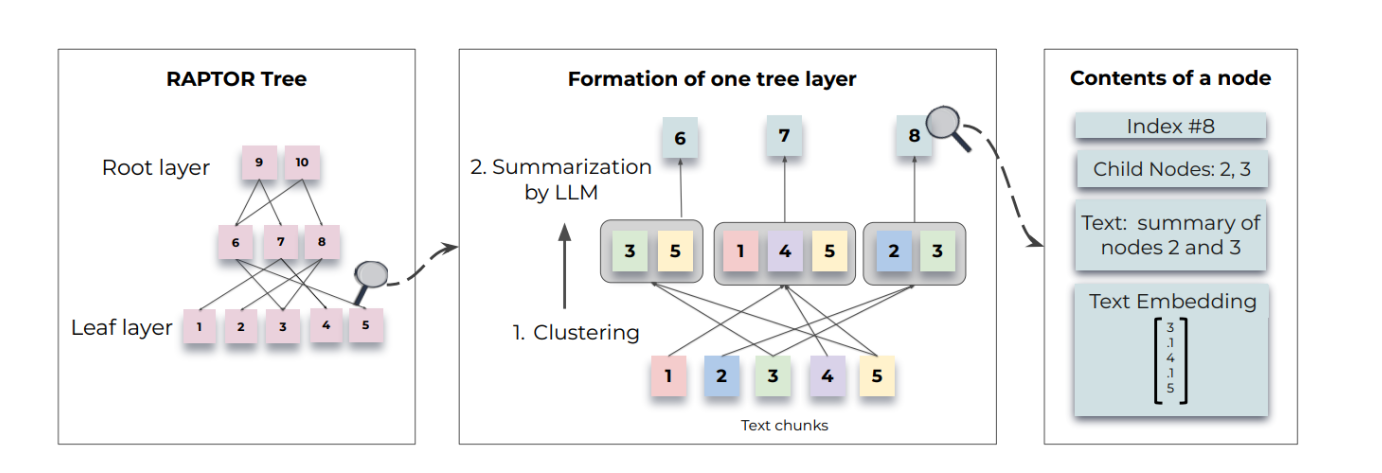【AI达人特训营】ResNet50-NAM:一种新的注意力计算方式复现
ResNet50-NAM: 一种新的注意力计算方式复现论文地址:https://arxiv.org/abs/2111.12419简介注意力机制在近年来大热,注意力机制可以帮助神经网络抑制通道中或者是空间中不太显著的特征。之前的很多的研究聚焦于如何通过注意力算子来获取显著性的特征。这些方法成功的发现了特征的不同维度之间的互信息量。但是,缺乏对权值的贡献因子的考虑,而这个贡献因子可以进一步的抑制不显著
ResNet50-NAM: 一种新的注意力计算方式复现
论文地址:https://arxiv.org/abs/2111.12419
简介
注意力机制在近年来大热,注意力机制可以帮助神经网络抑制通道中或者是空间中不太显著的特征。之前的很多的研究聚焦于如何通过注意力算子来获取显著性的特征。这些方法成功的发现了特征的不同维度之间的互信息量。但是,缺乏对权值的贡献因子的考虑,而这个贡献因子可以进一步的抑制不显著的特征。因此,我们瞄准了利用权值的贡献因子来提升注意力的效果。我们使用了Batch Normalization的缩放因子来表示权值的重要程度。这样可以避免如SE,BAM和CBAM一样增加全连接层和卷积层。这样,我们提出了一个新的注意力方式:基于归一化的注意力(NAM)。
方法
我们提出的NAM是一种轻量级的高效的注意力机制,我们采用了CBAM的模块集成方式,重新设计了通道注意力和空间注意力子模块,这样,NAM可以嵌入到每个网络block的最后。对于残差网络,可以嵌入到残差结构的最后。对于通道注意力子模块,我们使用了Batch Normalization中的缩放因子,如式子(1),缩放因子反映出各个通道的变化的大小,也表示了该通道的重要性。为什么这么说呢,可以这样理解,缩放因子即BN中的方差,方差越大表示该通道变化的越厉害,那么该通道中包含的信息会越丰富,重要性也越大,而那些变化不大的通道,信息单一,重要性小。
其中μB和σB\mu_B 和 \sigma_Bμ
B
和σ
B
为均值,BBB为标准差,γ和β\gamma 和 \betaγ和β是可训练的仿射变换参数(尺度和位移)参考Batch Normalization.通道注意力子模块如图(1)和式(2)所示:
其中McM_cM
c
表示最后得到的输出特征,γ\gammaγ是每个通道的缩放因子,因此,每个通道的权值可以通过 Wγ=γi/∑j=0γjW_\gamma =\gamma_i/\sum_{j=0}\gamma_jW
γ
=γ
i
/∑
j=0
γ
j
得到。我们也使用一个缩放因子 BNBNBN 来计算注意力权重,称为像素归一化。像素注意力如图(2)和式(3)所示:
为了抑制不重要的特征,作者在损失函数中加入了一个正则化项,如式(4)所示。
数据集介绍:Cifar100
链接:http://www.cs.toronto.edu/~kriz/cifar.html
CIFAR100数据集有100个类。每个类有600张大小为32 × 32 32\times 3232×32的彩色图像,其中500张作为训练集,100张作为测试集。
代码复现
1.引入依赖包
In [1]
from future import division
from future import print_function
import paddle
import paddle.nn as nn
from paddle.nn import functional as F
from paddle.utils.download import get_weights_path_from_url
import pickle
import numpy as np
from paddle import callbacks
from paddle.vision.transforms import (
ToTensor, RandomHorizontalFlip, RandomResizedCrop, SaturationTransform, Compose,
HueTransform, BrightnessTransform, ContrastTransform, RandomCrop, Normalize, RandomRotation
)
from paddle.vision.datasets import Cifar100
from paddle.io import DataLoader
from paddle.optimizer.lr import CosineAnnealingDecay, MultiStepDecay, LinearWarmup
import random
2.定义NAM注意力机制
它抑制了较少显著性的权值,对注意力模块应用一个权重稀疏惩罚
In [2]
class Channel_Att(nn.Layer):
def init(self, channels=3, t=16):
super(Channel_Att, self).init()
self.channels = channels
self.bn2 = nn.BatchNorm2D(self.channels)
def forward(self, x):
residual = x
x = self.bn2(x)
weight_bn = self.bn2.weight.abs() / paddle.sum(self.bn2.weight.abs())
x = x.transpose([0, 2, 3, 1])
x = paddle.multiply(weight_bn, x)
x = x.transpose([0, 3, 1, 2])
x = F.sigmoid(x) * residual #
return x
class Att(nn.Layer):
def init(self, channels=3, out_channels=None, no_spatial=True):
super(Att, self).init()
self.Channel_Att = Channel_Att(channels)
def forward(self, x):
x_out1=self.Channel_Att(x)
return x_out1
3.定义ResNet网络,加入NAM注意力机制
本代码参考Paddleclas实现,代码中将分类类别设定为100类
由于CIFAR100输入均为32x32的图像,而原始的ResNet第一层卷积是7X7的大核卷积,这样的卷积结构对于CIFAR100数据集性能表现较差。因此,我们参照:https://github.com/weiaicunzai/pytorch-cifar100 中的做法,将ResNet第一层卷积改为kernel_size=3,stride=1,padding=1的卷积,并去掉之后的maxpooling层
In [3]
all = []
model_urls = {
‘resnet18’: (‘https://paddle-hapi.bj.bcebos.com/models/resnet18.pdparams’,
‘cf548f46534aa3560945be4b95cd11c4’),
‘resnet34’: (‘https://paddle-hapi.bj.bcebos.com/models/resnet34.pdparams’,
‘8d2275cf8706028345f78ac0e1d31969’),
‘resnet50’: (‘https://paddle-hapi.bj.bcebos.com/models/resnet50.pdparams’,
‘ca6f485ee1ab0492d38f323885b0ad80’),
‘resnet101’: (‘https://paddle-hapi.bj.bcebos.com/models/resnet101.pdparams’,
‘02f35f034ca3858e1e54d4036443c92d’),
‘resnet152’: (‘https://paddle-hapi.bj.bcebos.com/models/resnet152.pdparams’,
‘7ad16a2f1e7333859ff986138630fd7a’),
}
class BasicBlock(nn.Layer):
expansion = 1
def __init__(self,
inplanes,
planes,
stride=1,
downsample=None,
groups=1,
base_width=64,
dilation=1,
norm_layer=None):
super(BasicBlock, self).__init__()
if norm_layer is None:
norm_layer = nn.BatchNorm2D
if dilation > 1:
raise NotImplementedError(
"Dilation > 1 not supported in BasicBlock")
self.conv1 = nn.Conv2D(
inplanes, planes, 3, padding=1, stride=stride, bias_attr=False)
self.bn1 = norm_layer(planes)
self.relu = nn.ReLU()
self.conv2 = nn.Conv2D(planes, planes, 3, padding=1, bias_attr=False)
self.bn2 = norm_layer(planes)
self.downsample = downsample
self.stride = stride
self.nam = Att(planes)
def forward(self, x):
identity = x
out = self.conv1(x)
out = self.bn1(out)
out = self.relu(out)
out = self.conv2(out)
out = self.bn2(out)
if self.downsample is not None:
identity = self.downsample(x)
out = self.nam(out)
out += identity
out = self.relu(out)
return out
class BottleneckBlock(nn.Layer):
expansion = 4
def __init__(self,
inplanes,
planes,
stride=1,
downsample=None,
groups=1,
base_width=64,
dilation=1,
norm_layer=None):
super(BottleneckBlock, self).__init__()
if norm_layer is None:
norm_layer = nn.BatchNorm2D
width = int(planes * (base_width / 64.)) * groups
self.conv1 = nn.Conv2D(inplanes, width, 1, bias_attr=False)
self.bn1 = norm_layer(width)
self.conv2 = nn.Conv2D(
width,
width,
3,
padding=dilation,
stride=stride,
groups=groups,
dilation=dilation,
bias_attr=False)
self.bn2 = norm_layer(width)
self.conv3 = nn.Conv2D(
width, planes * self.expansion, 1, bias_attr=False)
self.bn3 = norm_layer(planes * self.expansion)
self.relu = nn.ReLU()
self.downsample = downsample
self.stride = stride
self.nam = Att(planes*4)
def forward(self, x):
identity = x
out = self.conv1(x)
out = self.bn1(out)
out = self.relu(out)
out = self.conv2(out)
out = self.bn2(out)
out = self.relu(out)
out = self.conv3(out)
out = self.bn3(out)
if self.downsample is not None:
identity = self.downsample(x)
out = self.nam(out)
out += identity
out = self.relu(out)
return out
class ResNet(nn.Layer):
“”"ResNet model from"Deep Residual Learning for Image Recognition" <https://arxiv.org/pdf/1512.03385.pdf>_
Args:
Block (BasicBlock|BottleneckBlock): block module of model.
depth (int): layers of resnet, default: 50.
num_classes (int): output dim of last fc layer. If num_classes <=0, last fc layer
will not be defined. Default: 1000.
with_pool (bool): use pool before the last fc layer or not. Default: True.
Examples:
.. code-block:: python
from paddle.vision.models import ResNet
from paddle.vision.models.resnet import BottleneckBlock, BasicBlock
resnet50 = ResNet(BottleneckBlock, 50)
resnet18 = ResNet(BasicBlock, 18)
"""
def __init__(self, block, depth, num_classes=100, with_pool=True):
super(ResNet, self).__init__()
layer_cfg = {
18: [2, 2, 2, 2],
34: [3, 4, 6, 3],
50: [3, 4, 6, 3],
101: [3, 4, 23, 3],
152: [3, 8, 36, 3]
}
layers = layer_cfg[depth]
self.num_classes = num_classes
self.with_pool = with_pool
self._norm_layer = nn.BatchNorm2D
self.inplanes = 64
self.dilation = 1
###
# 将大核卷积改为小核卷积
###
self.conv1 = nn.Conv2D(
3,
self.inplanes,
kernel_size=3,
stride=1,
padding=1,
bias_attr=False)
self.bn1 = self._norm_layer(self.inplanes)
self.relu = nn.ReLU()
###
# 去掉第一层池化
###
# self.maxpool = nn.MaxPool2D(kernel_size=3, stride=2, padding=1)
self.layer1 = self._make_layer(block, 64, layers[0])
self.layer2 = self._make_layer(block, 128, layers[1], stride=2)
self.layer3 = self._make_layer(block, 256, layers[2], stride=2)
self.layer4 = self._make_layer(block, 512, layers[3], stride=2)
if with_pool:
self.avgpool = nn.AdaptiveAvgPool2D((1, 1))
if num_classes > 0:
self.fc = nn.Linear(512 * block.expansion, num_classes)
def _make_layer(self, block, planes, blocks, stride=1, dilate=False):
norm_layer = self._norm_layer
downsample = None
previous_dilation = self.dilation
if dilate:
self.dilation *= stride
stride = 1
if stride != 1 or self.inplanes != planes * block.expansion:
downsample = nn.Sequential(
nn.Conv2D(
self.inplanes,
planes * block.expansion,
1,
stride=stride,
bias_attr=False),
norm_layer(planes * block.expansion), )
layers = []
layers.append(
block(self.inplanes, planes, stride, downsample, 1, 64,
previous_dilation, norm_layer))
self.inplanes = planes * block.expansion
for _ in range(1, blocks):
layers.append(block(self.inplanes, planes, norm_layer=norm_layer))
return nn.Sequential(*layers)
def forward(self, x):
x = self.conv1(x)
x = self.bn1(x)
x = self.relu(x)
###
# 去掉池化
###
# x = self.maxpool(x)
x = self.layer1(x)
x = self.layer2(x)
x = self.layer3(x)
x = self.layer4(x)
if self.with_pool:
x = self.avgpool(x)
if self.num_classes > 0:
x = paddle.flatten(x, 1)
x = self.fc(x)
return x
def _resnet(arch, Block, depth, pretrained, **kwargs):
model = ResNet(Block, depth, **kwargs)
if pretrained:
assert arch in model_urls, “{} model do not have a pretrained model now, you should set pretrained=False”.format(
arch)
weight_path = get_weights_path_from_url(model_urls[arch][0],
model_urls[arch][1])
param = paddle.load(weight_path)
model.set_dict(param)
return model
def resnet50(pretrained=False, **kwargs):
“”"ResNet 50-layer model
Args:
pretrained (bool): If True, returns a model pre-trained on ImageNet
Examples:
.. code-block:: python
from paddle.vision.models import resnet50
# build model
model = resnet50()
# build model and load imagenet pretrained weight
# model = resnet50(pretrained=True)
"""
return _resnet('resnet50', BottleneckBlock, 50, pretrained, **kwargs)
def resnet18(pretrained=False, **kwargs):
“”"ResNet 18-layer model
Args:
pretrained (bool): If True, returns a model pre-trained on ImageNet
Examples:
.. code-block:: python
from paddle.vision.models import resnet18
# build model
model = resnet18()
# build model and load imagenet pretrained weight
# model = resnet18(pretrained=True)
"""
return _resnet('resnet18', BasicBlock, 18, pretrained, **kwargs)
In [4]
net = resnet50()
paddle.summary(net, (1,3,32,32))
W0616 11:51:50.953474 25258 gpu_context.cc:278] Please NOTE: device: 0, GPU Compute Capability: 7.0, Driver API Version: 11.2, Runtime API Version: 10.1
W0616 11:51:50.958021 25258 gpu_context.cc:306] device: 0, cuDNN Version: 7.6.
Layer (type) Input Shape Output Shape Param #
Conv2D-1 [[1, 3, 32, 32]] [1, 64, 32, 32] 1,728
BatchNorm2D-1 [[1, 64, 32, 32]] [1, 64, 32, 32] 256
ReLU-1 [[1, 64, 32, 32]] [1, 64, 32, 32] 0
Conv2D-3 [[1, 64, 32, 32]] [1, 64, 32, 32] 4,096
BatchNorm2D-3 [[1, 64, 32, 32]] [1, 64, 32, 32] 256
ReLU-2 [[1, 256, 32, 32]] [1, 256, 32, 32] 0
Conv2D-4 [[1, 64, 32, 32]] [1, 64, 32, 32] 36,864
BatchNorm2D-4 [[1, 64, 32, 32]] [1, 64, 32, 32] 256
Conv2D-5 [[1, 64, 32, 32]] [1, 256, 32, 32] 16,384
BatchNorm2D-5 [[1, 256, 32, 32]] [1, 256, 32, 32] 1,024
Conv2D-2 [[1, 64, 32, 32]] [1, 256, 32, 32] 16,384
BatchNorm2D-2 [[1, 256, 32, 32]] [1, 256, 32, 32] 1,024
BatchNorm2D-6 [[1, 256, 32, 32]] [1, 256, 32, 32] 1,024
Channel_Att-1 [[1, 256, 32, 32]] [1, 256, 32, 32] 0
Att-1 [[1, 256, 32, 32]] [1, 256, 32, 32] 0
BottleneckBlock-1 [[1, 64, 32, 32]] [1, 256, 32, 32] 0
Conv2D-6 [[1, 256, 32, 32]] [1, 64, 32, 32] 16,384
BatchNorm2D-7 [[1, 64, 32, 32]] [1, 64, 32, 32] 256
ReLU-3 [[1, 256, 32, 32]] [1, 256, 32, 32] 0
Conv2D-7 [[1, 64, 32, 32]] [1, 64, 32, 32] 36,864
BatchNorm2D-8 [[1, 64, 32, 32]] [1, 64, 32, 32] 256
Conv2D-8 [[1, 64, 32, 32]] [1, 256, 32, 32] 16,384
BatchNorm2D-9 [[1, 256, 32, 32]] [1, 256, 32, 32] 1,024
BatchNorm2D-10 [[1, 256, 32, 32]] [1, 256, 32, 32] 1,024
Channel_Att-2 [[1, 256, 32, 32]] [1, 256, 32, 32] 0
Att-2 [[1, 256, 32, 32]] [1, 256, 32, 32] 0
BottleneckBlock-2 [[1, 256, 32, 32]] [1, 256, 32, 32] 0
Conv2D-9 [[1, 256, 32, 32]] [1, 64, 32, 32] 16,384
BatchNorm2D-11 [[1, 64, 32, 32]] [1, 64, 32, 32] 256
ReLU-4 [[1, 256, 32, 32]] [1, 256, 32, 32] 0
Conv2D-10 [[1, 64, 32, 32]] [1, 64, 32, 32] 36,864
BatchNorm2D-12 [[1, 64, 32, 32]] [1, 64, 32, 32] 256
Conv2D-11 [[1, 64, 32, 32]] [1, 256, 32, 32] 16,384
BatchNorm2D-13 [[1, 256, 32, 32]] [1, 256, 32, 32] 1,024
BatchNorm2D-14 [[1, 256, 32, 32]] [1, 256, 32, 32] 1,024
Channel_Att-3 [[1, 256, 32, 32]] [1, 256, 32, 32] 0
Att-3 [[1, 256, 32, 32]] [1, 256, 32, 32] 0
BottleneckBlock-3 [[1, 256, 32, 32]] [1, 256, 32, 32] 0
Conv2D-13 [[1, 256, 32, 32]] [1, 128, 32, 32] 32,768
BatchNorm2D-16 [[1, 128, 32, 32]] [1, 128, 32, 32] 512
ReLU-5 [[1, 512, 16, 16]] [1, 512, 16, 16] 0
Conv2D-14 [[1, 128, 32, 32]] [1, 128, 16, 16] 147,456
BatchNorm2D-17 [[1, 128, 16, 16]] [1, 128, 16, 16] 512
Conv2D-15 [[1, 128, 16, 16]] [1, 512, 16, 16] 65,536
BatchNorm2D-18 [[1, 512, 16, 16]] [1, 512, 16, 16] 2,048
Conv2D-12 [[1, 256, 32, 32]] [1, 512, 16, 16] 131,072
BatchNorm2D-15 [[1, 512, 16, 16]] [1, 512, 16, 16] 2,048
BatchNorm2D-19 [[1, 512, 16, 16]] [1, 512, 16, 16] 2,048
Channel_Att-4 [[1, 512, 16, 16]] [1, 512, 16, 16] 0
Att-4 [[1, 512, 16, 16]] [1, 512, 16, 16] 0
BottleneckBlock-4 [[1, 256, 32, 32]] [1, 512, 16, 16] 0
Conv2D-16 [[1, 512, 16, 16]] [1, 128, 16, 16] 65,536
BatchNorm2D-20 [[1, 128, 16, 16]] [1, 128, 16, 16] 512
ReLU-6 [[1, 512, 16, 16]] [1, 512, 16, 16] 0
Conv2D-17 [[1, 128, 16, 16]] [1, 128, 16, 16] 147,456
BatchNorm2D-21 [[1, 128, 16, 16]] [1, 128, 16, 16] 512
Conv2D-18 [[1, 128, 16, 16]] [1, 512, 16, 16] 65,536
BatchNorm2D-22 [[1, 512, 16, 16]] [1, 512, 16, 16] 2,048
BatchNorm2D-23 [[1, 512, 16, 16]] [1, 512, 16, 16] 2,048
Channel_Att-5 [[1, 512, 16, 16]] [1, 512, 16, 16] 0
Att-5 [[1, 512, 16, 16]] [1, 512, 16, 16] 0
BottleneckBlock-5 [[1, 512, 16, 16]] [1, 512, 16, 16] 0
Conv2D-19 [[1, 512, 16, 16]] [1, 128, 16, 16] 65,536
BatchNorm2D-24 [[1, 128, 16, 16]] [1, 128, 16, 16] 512
ReLU-7 [[1, 512, 16, 16]] [1, 512, 16, 16] 0
Conv2D-20 [[1, 128, 16, 16]] [1, 128, 16, 16] 147,456
BatchNorm2D-25 [[1, 128, 16, 16]] [1, 128, 16, 16] 512
Conv2D-21 [[1, 128, 16, 16]] [1, 512, 16, 16] 65,536
BatchNorm2D-26 [[1, 512, 16, 16]] [1, 512, 16, 16] 2,048
BatchNorm2D-27 [[1, 512, 16, 16]] [1, 512, 16, 16] 2,048
Channel_Att-6 [[1, 512, 16, 16]] [1, 512, 16, 16] 0
Att-6 [[1, 512, 16, 16]] [1, 512, 16, 16] 0
BottleneckBlock-6 [[1, 512, 16, 16]] [1, 512, 16, 16] 0
Conv2D-22 [[1, 512, 16, 16]] [1, 128, 16, 16] 65,536
BatchNorm2D-28 [[1, 128, 16, 16]] [1, 128, 16, 16] 512
ReLU-8 [[1, 512, 16, 16]] [1, 512, 16, 16] 0
Conv2D-23 [[1, 128, 16, 16]] [1, 128, 16, 16] 147,456
BatchNorm2D-29 [[1, 128, 16, 16]] [1, 128, 16, 16] 512
Conv2D-24 [[1, 128, 16, 16]] [1, 512, 16, 16] 65,536
BatchNorm2D-30 [[1, 512, 16, 16]] [1, 512, 16, 16] 2,048
BatchNorm2D-31 [[1, 512, 16, 16]] [1, 512, 16, 16] 2,048
Channel_Att-7 [[1, 512, 16, 16]] [1, 512, 16, 16] 0
Att-7 [[1, 512, 16, 16]] [1, 512, 16, 16] 0
BottleneckBlock-7 [[1, 512, 16, 16]] [1, 512, 16, 16] 0
Conv2D-26 [[1, 512, 16, 16]] [1, 256, 16, 16] 131,072
BatchNorm2D-33 [[1, 256, 16, 16]] [1, 256, 16, 16] 1,024
ReLU-9 [[1, 1024, 8, 8]] [1, 1024, 8, 8] 0
Conv2D-27 [[1, 256, 16, 16]] [1, 256, 8, 8] 589,824
BatchNorm2D-34 [[1, 256, 8, 8]] [1, 256, 8, 8] 1,024
Conv2D-28 [[1, 256, 8, 8]] [1, 1024, 8, 8] 262,144
BatchNorm2D-35 [[1, 1024, 8, 8]] [1, 1024, 8, 8] 4,096
Conv2D-25 [[1, 512, 16, 16]] [1, 1024, 8, 8] 524,288
BatchNorm2D-32 [[1, 1024, 8, 8]] [1, 1024, 8, 8] 4,096
BatchNorm2D-36 [[1, 1024, 8, 8]] [1, 1024, 8, 8] 4,096
Channel_Att-8 [[1, 1024, 8, 8]] [1, 1024, 8, 8] 0
Att-8 [[1, 1024, 8, 8]] [1, 1024, 8, 8] 0
BottleneckBlock-8 [[1, 512, 16, 16]] [1, 1024, 8, 8] 0
Conv2D-29 [[1, 1024, 8, 8]] [1, 256, 8, 8] 262,144
BatchNorm2D-37 [[1, 256, 8, 8]] [1, 256, 8, 8] 1,024
ReLU-10 [[1, 1024, 8, 8]] [1, 1024, 8, 8] 0
Conv2D-30 [[1, 256, 8, 8]] [1, 256, 8, 8] 589,824
BatchNorm2D-38 [[1, 256, 8, 8]] [1, 256, 8, 8] 1,024
Conv2D-31 [[1, 256, 8, 8]] [1, 1024, 8, 8] 262,144
BatchNorm2D-39 [[1, 1024, 8, 8]] [1, 1024, 8, 8] 4,096
BatchNorm2D-40 [[1, 1024, 8, 8]] [1, 1024, 8, 8] 4,096
Channel_Att-9 [[1, 1024, 8, 8]] [1, 1024, 8, 8] 0
Att-9 [[1, 1024, 8, 8]] [1, 1024, 8, 8] 0
BottleneckBlock-9 [[1, 1024, 8, 8]] [1, 1024, 8, 8] 0
Conv2D-32 [[1, 1024, 8, 8]] [1, 256, 8, 8] 262,144
BatchNorm2D-41 [[1, 256, 8, 8]] [1, 256, 8, 8] 1,024
ReLU-11 [[1, 1024, 8, 8]] [1, 1024, 8, 8] 0
Conv2D-33 [[1, 256, 8, 8]] [1, 256, 8, 8] 589,824
BatchNorm2D-42 [[1, 256, 8, 8]] [1, 256, 8, 8] 1,024
Conv2D-34 [[1, 256, 8, 8]] [1, 1024, 8, 8] 262,144
BatchNorm2D-43 [[1, 1024, 8, 8]] [1, 1024, 8, 8] 4,096
BatchNorm2D-44 [[1, 1024, 8, 8]] [1, 1024, 8, 8] 4,096
Channel_Att-10 [[1, 1024, 8, 8]] [1, 1024, 8, 8] 0
Att-10 [[1, 1024, 8, 8]] [1, 1024, 8, 8] 0
BottleneckBlock-10 [[1, 1024, 8, 8]] [1, 1024, 8, 8] 0
Conv2D-35 [[1, 1024, 8, 8]] [1, 256, 8, 8] 262,144
BatchNorm2D-45 [[1, 256, 8, 8]] [1, 256, 8, 8] 1,024
ReLU-12 [[1, 1024, 8, 8]] [1, 1024, 8, 8] 0
Conv2D-36 [[1, 256, 8, 8]] [1, 256, 8, 8] 589,824
BatchNorm2D-46 [[1, 256, 8, 8]] [1, 256, 8, 8] 1,024
Conv2D-37 [[1, 256, 8, 8]] [1, 1024, 8, 8] 262,144
BatchNorm2D-47 [[1, 1024, 8, 8]] [1, 1024, 8, 8] 4,096
BatchNorm2D-48 [[1, 1024, 8, 8]] [1, 1024, 8, 8] 4,096
Channel_Att-11 [[1, 1024, 8, 8]] [1, 1024, 8, 8] 0
Att-11 [[1, 1024, 8, 8]] [1, 1024, 8, 8] 0
BottleneckBlock-11 [[1, 1024, 8, 8]] [1, 1024, 8, 8] 0
Conv2D-38 [[1, 1024, 8, 8]] [1, 256, 8, 8] 262,144
BatchNorm2D-49 [[1, 256, 8, 8]] [1, 256, 8, 8] 1,024
ReLU-13 [[1, 1024, 8, 8]] [1, 1024, 8, 8] 0
Conv2D-39 [[1, 256, 8, 8]] [1, 256, 8, 8] 589,824
BatchNorm2D-50 [[1, 256, 8, 8]] [1, 256, 8, 8] 1,024
Conv2D-40 [[1, 256, 8, 8]] [1, 1024, 8, 8] 262,144
BatchNorm2D-51 [[1, 1024, 8, 8]] [1, 1024, 8, 8] 4,096
BatchNorm2D-52 [[1, 1024, 8, 8]] [1, 1024, 8, 8] 4,096
Channel_Att-12 [[1, 1024, 8, 8]] [1, 1024, 8, 8] 0
Att-12 [[1, 1024, 8, 8]] [1, 1024, 8, 8] 0
BottleneckBlock-12 [[1, 1024, 8, 8]] [1, 1024, 8, 8] 0
Conv2D-41 [[1, 1024, 8, 8]] [1, 256, 8, 8] 262,144
BatchNorm2D-53 [[1, 256, 8, 8]] [1, 256, 8, 8] 1,024
ReLU-14 [[1, 1024, 8, 8]] [1, 1024, 8, 8] 0
Conv2D-42 [[1, 256, 8, 8]] [1, 256, 8, 8] 589,824
BatchNorm2D-54 [[1, 256, 8, 8]] [1, 256, 8, 8] 1,024
Conv2D-43 [[1, 256, 8, 8]] [1, 1024, 8, 8] 262,144
BatchNorm2D-55 [[1, 1024, 8, 8]] [1, 1024, 8, 8] 4,096
BatchNorm2D-56 [[1, 1024, 8, 8]] [1, 1024, 8, 8] 4,096
Channel_Att-13 [[1, 1024, 8, 8]] [1, 1024, 8, 8] 0
Att-13 [[1, 1024, 8, 8]] [1, 1024, 8, 8] 0
BottleneckBlock-13 [[1, 1024, 8, 8]] [1, 1024, 8, 8] 0
Conv2D-45 [[1, 1024, 8, 8]] [1, 512, 8, 8] 524,288
BatchNorm2D-58 [[1, 512, 8, 8]] [1, 512, 8, 8] 2,048
ReLU-15 [[1, 2048, 4, 4]] [1, 2048, 4, 4] 0
Conv2D-46 [[1, 512, 8, 8]] [1, 512, 4, 4] 2,359,296
BatchNorm2D-59 [[1, 512, 4, 4]] [1, 512, 4, 4] 2,048
Conv2D-47 [[1, 512, 4, 4]] [1, 2048, 4, 4] 1,048,576
BatchNorm2D-60 [[1, 2048, 4, 4]] [1, 2048, 4, 4] 8,192
Conv2D-44 [[1, 1024, 8, 8]] [1, 2048, 4, 4] 2,097,152
BatchNorm2D-57 [[1, 2048, 4, 4]] [1, 2048, 4, 4] 8,192
BatchNorm2D-61 [[1, 2048, 4, 4]] [1, 2048, 4, 4] 8,192
Channel_Att-14 [[1, 2048, 4, 4]] [1, 2048, 4, 4] 0
Att-14 [[1, 2048, 4, 4]] [1, 2048, 4, 4] 0
BottleneckBlock-14 [[1, 1024, 8, 8]] [1, 2048, 4, 4] 0
Conv2D-48 [[1, 2048, 4, 4]] [1, 512, 4, 4] 1,048,576
BatchNorm2D-62 [[1, 512, 4, 4]] [1, 512, 4, 4] 2,048
ReLU-16 [[1, 2048, 4, 4]] [1, 2048, 4, 4] 0
Conv2D-49 [[1, 512, 4, 4]] [1, 512, 4, 4] 2,359,296
BatchNorm2D-63 [[1, 512, 4, 4]] [1, 512, 4, 4] 2,048
Conv2D-50 [[1, 512, 4, 4]] [1, 2048, 4, 4] 1,048,576
BatchNorm2D-64 [[1, 2048, 4, 4]] [1, 2048, 4, 4] 8,192
BatchNorm2D-65 [[1, 2048, 4, 4]] [1, 2048, 4, 4] 8,192
Channel_Att-15 [[1, 2048, 4, 4]] [1, 2048, 4, 4] 0
Att-15 [[1, 2048, 4, 4]] [1, 2048, 4, 4] 0
BottleneckBlock-15 [[1, 2048, 4, 4]] [1, 2048, 4, 4] 0
Conv2D-51 [[1, 2048, 4, 4]] [1, 512, 4, 4] 1,048,576
BatchNorm2D-66 [[1, 512, 4, 4]] [1, 512, 4, 4] 2,048
ReLU-17 [[1, 2048, 4, 4]] [1, 2048, 4, 4] 0
Conv2D-52 [[1, 512, 4, 4]] [1, 512, 4, 4] 2,359,296
BatchNorm2D-67 [[1, 512, 4, 4]] [1, 512, 4, 4] 2,048
Conv2D-53 [[1, 512, 4, 4]] [1, 2048, 4, 4] 1,048,576
BatchNorm2D-68 [[1, 2048, 4, 4]] [1, 2048, 4, 4] 8,192
BatchNorm2D-69 [[1, 2048, 4, 4]] [1, 2048, 4, 4] 8,192
Channel_Att-16 [[1, 2048, 4, 4]] [1, 2048, 4, 4] 0
Att-16 [[1, 2048, 4, 4]] [1, 2048, 4, 4] 0
BottleneckBlock-16 [[1, 2048, 4, 4]] [1, 2048, 4, 4] 0
AdaptiveAvgPool2D-1 [[1, 2048, 4, 4]] [1, 2048, 1, 1] 0
Linear-1 [[1, 2048]] [1, 100] 204,900
Total params: 23,818,788
Trainable params: 23,652,132
Non-trainable params: 166,656
Input size (MB): 0.01
Forward/backward pass size (MB): 121.64
Params size (MB): 90.86
Estimated Total Size (MB): 212.51
{‘total_params’: 23818788, ‘trainable_params’: 23652132}
4.自定义数据集处理方式
In [5]
class ToArray(object):
def call(self, img):
img = np.array(img)
img = np.transpose(img, [2, 0, 1])
img = img / 255.
return img.astype(‘float32’)
class RandomApply(object):
def init(self, transform, p=0.5):
super().init()
self.p = p
self.transform = transform
def __call__(self, img):
if self.p < random.random():
return img
img = self.transform(img)
return img
class LRSchedulerM(callbacks.LRScheduler):
def init(self, by_step=False, by_epoch=True, warm_up=True):
super().init(by_step, by_epoch)
assert by_step ^ warm_up
self.warm_up = warm_up
def on_epoch_end(self, epoch, logs=None):
if self.by_epoch and not self.warm_up:
if self.model._optimizer and hasattr(
self.model._optimizer, '_learning_rate') and isinstance(
self.model._optimizer._learning_rate, paddle.optimizer.lr.LRScheduler):
self.model._optimizer._learning_rate.step()
def on_train_batch_end(self, step, logs=None):
if self.by_step or self.warm_up:
if self.model._optimizer and hasattr(
self.model._optimizer, '_learning_rate') and isinstance(
self.model._optimizer._learning_rate, paddle.optimizer.lr.LRScheduler):
self.model._optimizer._learning_rate.step()
if self.model._optimizer._learning_rate.last_epoch >= self.model._optimizer._learning_rate.warmup_steps:
self.warm_up = False
def _on_train_batch_end(self, step, logs=None):
logs = logs or {}
logs[‘lr’] = self.model._optimizer.get_lr()
self.train_step += 1
if self._is_write():
self._updates(logs, ‘train’)
def _on_train_begin(self, logs=None):
self.epochs = self.params[‘epochs’]
assert self.epochs
self.train_metrics = self.params[‘metrics’] + [‘lr’]
assert self.train_metrics
self._is_fit = True
self.train_step = 0
callbacks.VisualDL.on_train_batch_end = _on_train_batch_end
callbacks.VisualDL.on_train_begin = _on_train_begin
5.在Cifar100数据集上训练模型
使用Paddle自带的Cifar100数据集API加载
In [ ]
model = paddle.Model(resnet50(pretrained=False))
加载checkpoint
model.load(‘output/ResNet50-NAM/299.pdparams’)
MAX_EPOCH = 300
LR = 0.01
WEIGHT_DECAY = 5e-4
MOMENTUM = 0.9
BATCH_SIZE = 256
CIFAR_MEAN = [0.5071, 0.4865, 0.4409]
CIFAR_STD = [0.1942, 0.1918, 0.1958]
DATA_FILE = ‘./data/data76994/cifar-100-python.tar.gz’
model.prepare(
paddle.optimizer.Momentum(
learning_rate=LinearWarmup(CosineAnnealingDecay(LR, MAX_EPOCH), 2000, 0., LR),
momentum=MOMENTUM,
parameters=model.parameters(),
weight_decay=WEIGHT_DECAY),
paddle.nn.CrossEntropyLoss(),
paddle.metric.Accuracy(topk=(1,5)))
定义数据集增强方式
transforms = Compose([
RandomCrop(32, padding=4),
RandomApply(BrightnessTransform(0.1)),
RandomApply(ContrastTransform(0.1)),
RandomHorizontalFlip(),
RandomRotation(15),
ToArray(),
Normalize(CIFAR_MEAN, CIFAR_STD),
])
val_transforms = Compose([ToArray(), Normalize(CIFAR_MEAN, CIFAR_STD)])
加载训练和测试数据集
train_set = Cifar100(DATA_FILE, mode=‘train’, transform=transforms)
test_set = Cifar100(DATA_FILE, mode=‘test’, transform=val_transforms)
定义保存方式和训练可视化
checkpoint_callback = paddle.callbacks.ModelCheckpoint(save_freq=1, save_dir=‘output/ResNet50-NAM’)
callbacks = [LRSchedulerM(),checkpoint_callback, callbacks.VisualDL(‘vis_logs/resnet50_nam.log’)]
训练模型
model.fit(
train_set,
test_set,
epochs=MAX_EPOCH,
batch_size=BATCH_SIZE,
shuffle=True,
num_workers=4,
verbose=1,
callbacks=callbacks,
)
对比试验:ResNet50原始模型
In [ ]
model = paddle.Model(paddle.vision.models.resnet50(pretrained=False))
加载checkpoint
model.load(‘output/ResNet50-NAM/299.pdparams’)
MAX_EPOCH = 300
LR = 0.01
WEIGHT_DECAY = 5e-4
MOMENTUM = 0.9
BATCH_SIZE = 256
CIFAR_MEAN = [0.5071, 0.4865, 0.4409]
CIFAR_STD = [0.1942, 0.1918, 0.1958]
DATA_FILE = ‘./data/data76994/cifar-100-python.tar.gz’
model.prepare(
paddle.optimizer.Momentum(
learning_rate=LinearWarmup(CosineAnnealingDecay(LR, MAX_EPOCH), 2000, 0., LR),
momentum=MOMENTUM,
parameters=model.parameters(),
weight_decay=WEIGHT_DECAY),
paddle.nn.CrossEntropyLoss(),
paddle.metric.Accuracy(topk=(1,5)))
定义数据集增强方式
transforms = Compose([
RandomCrop(32, padding=4),
RandomApply(BrightnessTransform(0.1)),
RandomApply(ContrastTransform(0.1)),
RandomHorizontalFlip(),
RandomRotation(15),
ToArray(),
Normalize(CIFAR_MEAN, CIFAR_STD),
])
val_transforms = Compose([ToArray(), Normalize(CIFAR_MEAN, CIFAR_STD)])
加载训练和测试数据集
train_set = Cifar100(DATA_FILE, mode=‘train’, transform=transforms)
test_set = Cifar100(DATA_FILE, mode=‘test’, transform=val_transforms)
定义保存方式和训练可视化
checkpoint_callback = paddle.callbacks.ModelCheckpoint(save_freq=1, save_dir=‘output/ResNet50’)
callbacks = [LRSchedulerM(),checkpoint_callback, callbacks.VisualDL(‘vis_logs/resnet50.log’)]
训练模型
model.fit(
train_set,
test_set,
epochs=MAX_EPOCH,
batch_size=BATCH_SIZE,
shuffle=True,
num_workers=4,
verbose=1,
callbacks=callbacks,
)
实验结果
两次实验均使用相同的参数:
epoch = 90
lr = 0.01
weight_decay = 5e-4
momentum = 0.9
pretrained = False
ResNet50-NAM模型的Top-1 acc和Top-5 acc如下图所示:
ResNet50模型的Top-1 acc和Top-5 acc如下图所示:
通过比较,经过修改后的模型效果得到了明显的提升,且原始ResNet50产生了明显的过拟合现象
6.使用训练后的模型进行预测
In [ ]
models = paddle.Model(resnet50())
models.load(‘output/ResNet50-NAM/1.pdparams’)
models.prepare()
result = models.evaluate(test_set, verbose=1)
print(result)
总结
本次复现任务是一个很简单的小项目,是百度AI达人项目的一个课题,仅需要复现NAM的结构并对ResNet50进行微小的修改,这也是本人第一次对论文进行复现。本次复现主要参考了github上他人的Pytorch复现代码,并改写为PaddlePaddle框架代码,特别感谢百度李老师的指导!
本次复现过程中发现ResNet50网络在该数据集上表现并不好,与原论文差异较大,通过查阅资料发现ResNet50第一层的大核卷积对于小图片的特征提取效果较差,于是对ResNet的网络结构也进行了修改,将第一层卷积的卷积核缩小,并去掉第一层池化,重新训练后精度效果得到大大提升
更多推荐
 已为社区贡献1436条内容
已为社区贡献1436条内容










所有评论(0)